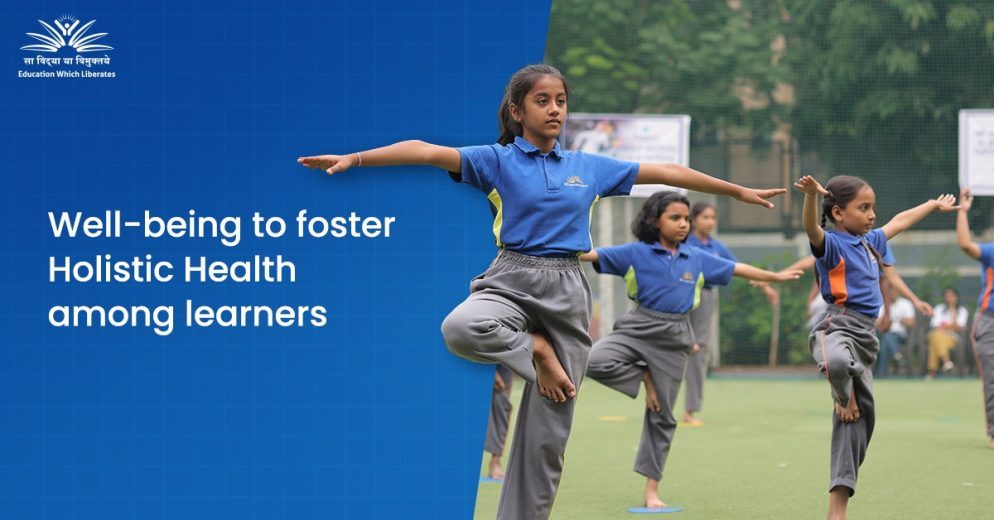
Well being To Foster Holistic Health Among Learners Or Nurturing Young Minds : Yoga For Kids In The Classroom.
In today’s fast-paced world, where stress and distractions abound, creating a nurturing environment for children’s holistic development is crucial. As educators and caregivers, our responsibility extends beyond academic excellence to fostering emotional well-being and mindfulness. Powerful tools that have gained immense recognition for their physical, mental, and emotional benefits are yoga, brain gym exercises and mindfulness during school assembly in addition to circle time when integrated into the classroom.
Understanding Holistic Health in Education
Holistic health encompasses the well-being of mind, body, and spirit. In an educational setting, prioritizing holistic health goes beyond conventional teachings. It involves nurturing emotional intelligence, fostering resilience, and providing tools for managing stress and emotional turbulence. Yoga, with its centuries-old practice of postures, breathing, and meditation, perfectly aligns with these goals.
Nourish to Flourish
Yoga for kids isn’t just a set of physical exercises; it’s a holistic approach to self-discovery and inner balance. Through child-friendly yoga poses, youngsters explore their bodies’ capabilities while enhancing flexibility and strength. Additionally, yoga fosters concentration and mindfulness, skills crucial for academic success.
When kids engage in yoga, brain gym and mindfulness they learn to regulate their emotions and develop a deeper understanding of self-awareness. Breathing exercises, a fundamental aspect of yoga, teach them to manage stress and anxiety effectively. These practices create a serene and focused classroom environment, conducive to learning and personal growth.
Benefits of Integrating Yoga, Brain gym and mindfulness
1. Emotional Regulation:
Empowers children with techniques to handle emotions constructively, reducing impulsivity and enhancing self-control.
2. Improves Focus and Concentration:
Through mindfulness exercises, children learn to concentrate better, leading to improved academic performance.
3. Stress Management:
Breathing exercises help alleviate stress, promoting a calmer and more relaxed state of mind.
4. Physical Fitness:
They enhance flexibility, strength, and the overall physical well-being.
5. Social and Emotional Learning (SEL):
These tools cultivate empathy, compassion, and respect towards oneself and others, fostering healthy social interactions.
Implementing Yoga, Brain Gym and mindfulness in the Classroom
1. Establish a Safe Space:
Create a designated area conducive to conduct these exercises, ensuring that there are no distractions.
2. Introduce Simple and appropriate techniques:
Start with basic exercises gradually increasing the difficulty levels as children become more comfortable.
3. Incorporate Brain Gym Exercises:
Teach brain gym exercises to help children use both the right and left brain rationally.
4. Make it Engaging:
Use storytelling, games, music and case studies to make exercise sessions enjoyable and interactive.
5. Encourage Regular Practice:
Foster a routine by incorporating brief yoga sessions into the daily schedule.
Conclusion
Incorporating yoga, brain gym exercises and mindfulness in the classroom aren’t merely extracurricular activities—they are powerful tools for nurturing the overall well-being of children. By providing these invaluable tools early in life, we empower them to navigate challenges, build resilience, and lead healthier, more balanced lives.
This transformative practice will instill lifelong skills for mental and emotional well-being. As educators, embracing these practices allow us to create an environment that not only educates but also nurtures the whole being, fostering a generation of mindful and emotionally resilient individuals.

